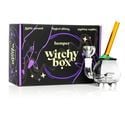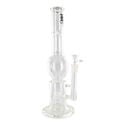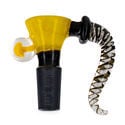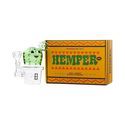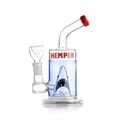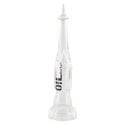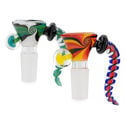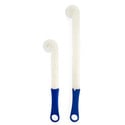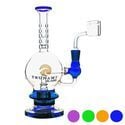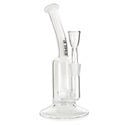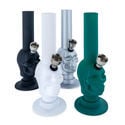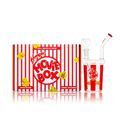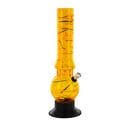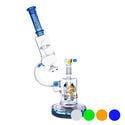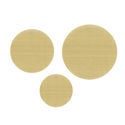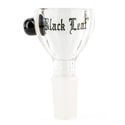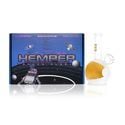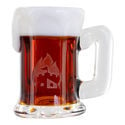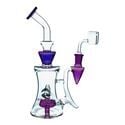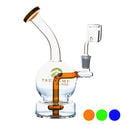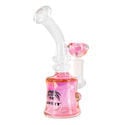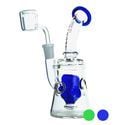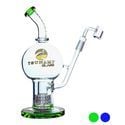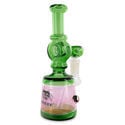-
Seed Shop
-
Feminized
Cannabis seeds -
Autoflowering
Cannabis Seeds -
Regular
Cannabis Seeds -
F1 Hybrid
Cannabis Seeds -
CBD
Cannabis Seeds -
Zamnesia
Cannabis Seeds
-
Top 10’s
- Top 10 Feminized Seeds
- Top 10 Autoflowering Seeds
- Top 10 Regular Seeds
- Top 10 USA Cannabis Strains
- Top 10 Zamnesia Seeds
-
Favourites
- Beginner Strains
- Below 1% THC
- Classic Cannabis Strains
- Cup Winners
- F1 Hybrids
- Fast-Flowering Strains
- High CBD Strains
- High THC Strains
- Mix Packs
- Zamnesia Exclusive Collabs
-
-
Headshop
-
Vaporshop
- Spare Parts & Accessories
- AirVape X
- AirVape XS GO (2021)
- Arizer Air MAX
- Arizer Extreme Q
- Arizer Solo 2
- Arizer V-Tower
- Arizer XQ2
- Boundless CFC 2.0 Vaporizer
- Boundless CFX
- Boundless TERA (V3)
- CRAFTY+
- DaVinci IQ2
- DaVinci IQC
- DaVinci MIQRO
- Dr. Dabber Boost EVO
- Dr. Dabber Stella
- DynaVap Omni 2021
- DynaVap VapCap "M" PLUS 2023
- DynaVap VapCap 'M' 2021
- DynaVap VonG (i) Titanium
- Dynavap The "B" Series
- Eagle Bill
- Firefly 2+
- Flowermate Aura
-
Healthshop
-
Smartshop
-
Shroomshop
-
Growshop
-
Seed Shop
All CategoriesSeed Shop
- Autoflowering Cannabis Seeds
- Feminized Cannabis Seeds
- Zamnesia Seeds
- Zamnesia's Top 10
- CBD Seeds
- F1 Hybrids
- Seed Banks
- Mix Packs
-
Popular Strain Types
- Zamnesia Exclusive Collabs
- Classic Cannabis Strains
- Amnesia Seeds
- Haze Seeds
- Skunk Seeds
- Kush Seeds
- Purple Seeds
- Blueberry Seeds
- Cheese Seeds
- Diesel Seeds
- White Widow Seeds
- Gorilla Seeds
- Northern Lights Seeds
- Granddaddy Purple Seeds
- OG Kush Seeds
- Blue Dream Seeds
- Lemon Haze Seeds
- Bruce Banner Seeds
- Gelato Seeds
- Sour Diesel Seeds
- Jack Herer Seeds
- Girl Scout Cookies Seeds (GSC)
- Wedding Cake Seeds
- Zkittlez Seeds
- Pineapple Express Seeds
- Chemdawg Seeds
- Hindu Kush Seeds
- Mimosa Seeds
- Cup Winners
- F1 Hybrids
- Mix Packs
- Beginner Strains
- High THC Strains
- Fast-Flowering Strains
- Regular Cannabis Seeds
- USA Cannabis Strains
- Cup Winners
- Seedfinder
-
Vaporshop
All CategoriesVaporshop
- Top 10 Vaporizers
- Spare Parts & Accessories
- AirVape X
- AirVape XS GO (2021)
- Arizer Air MAX
- Arizer Extreme Q
- Arizer Solo 2
- Arizer V-Tower
- Arizer XQ2
- Boundless CFC 2.0 Vaporizer
- Boundless CFX
- Boundless TERA (V3)
- CRAFTY+
- DaVinci IQ2
- DaVinci IQC
- DaVinci MIQRO
- Dr. Dabber Boost EVO
- Dr. Dabber Stella
- DynaVap Omni 2021
- DynaVap VapCap "M" PLUS 2023
- DynaVap VapCap 'M' 2021
- DynaVap VonG (i) Titanium
- Dynavap The "B" Series
- Eagle Bill
- Firefly 2+
- Flowermate Aura
- Flowermate Cap Pro
- Flowermate Slick
- Flowermate V5.0S Pro
- G Pen Connect
- G Pen Elite II
- G Pen Micro+
- G Pen Pro
- G Pen Roam
- Hydrology9 Vaporizer
- Hyer Big-E Rig
- MIGHTY
- MIGHTY+
- PAX Mini
- PAX Plus
- PLENTY
- Pax 3 Vaporizer
- Puffco Peak PRO Smart Rig
- Puffco Peak Smart Rig
- Puffco Plus
- Storm Vaporizer
- The Proxy (Puffco)
- VOLCANO CLASSIC
- VOLCANO HYBRID
- Vape-Lifter
-
Smartshop
All CategoriesSmartshop
- Top 10 Smartshop
- Zamnesia Gift Cards
- After Party
- Aphrodisiacs
- Aromatherapy
- Blue Lotus
- CBD Vape Juice
- Capsule Machines
- Crystals, Gemstones & Minerals
- Dream Herbs
- Drug Tests
- Extracts
- Happy Caps
- Herbal Tea
- Herbs & Seeds
- Incense
- Kanna
- Kratom
- LSA Seeds
- Mescaline Cacti
- Microdosing
- Nootropics
- Relaxing
- Salvia divinorum
- Smart Seeds
- Stimulants
- Supplements
- Tinctures
- Vape Herbs
-
TRIBE
All CategoriesTRIBE
- My Membership
- Spend Gift Points
- TRIBE Sale
- Exclusive products
- Earn Extra Gift Points
-
TRIBE
- Early Access
- Refer a Friend
- Information
-
TRIBE
-
Language
 United States
United States
Monday, 14 July and Friday, 18 July 2025*
Anatomy Of A Bong
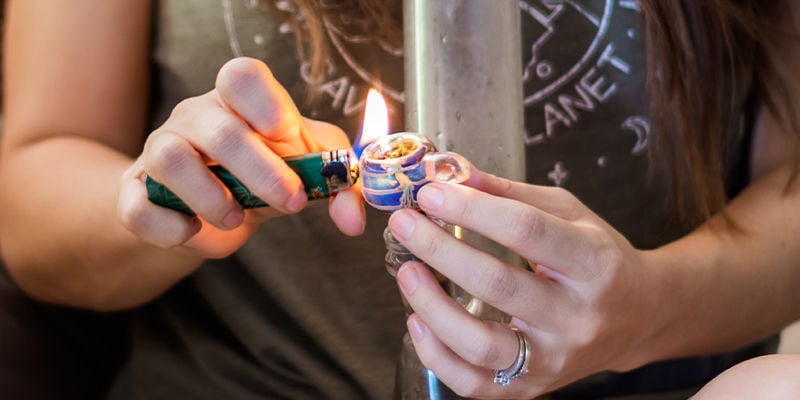
Bongs can be great fun and offer an experience like no other (a hard-hitting one). But their use isn't always intuitive and can look quite confusing sometimes. But fear not. We're here to help! In this article, we’ll talk you through all the different parts of a bong, so you can learn how to use them skillfully.
Why use a bong?
Most people begin using cannabis with joints and spliffs. As they suit all kinds of situations, these classic methods are the favourites of most smokers, bust most stoners also at least dabble in the world of bongs from time to time.
When consuming cannabis, bongs can be a great alternative to joints, spliffs and pipes. They allow users to take very large hits with heavier effects and the smoke is cooled and filtered simultaneously for a smooth experience.
For some people, bongs are a special treat that come out once in a while when they want to get particularly high. For others, they are more of a daily ritual. Either way, the main reason for almost anyone to use a bong is that they allow people to get very high very quickly.
But that’s not all. Bongs use water to filter the smoke before it reaches your mouth, making for an extra smooth experience. And more advanced bongs have a wide array of percolators and filters that serve to cool and clean the smoke even further. This means that you can fully enjoy the terpene profile of your cannabis while many of the larger and more disgusting molecules that get carried in smoke get removed—which are of no use to you, so letting the bong remove them for you is a great idea.
Are bubblers the same as bongs?
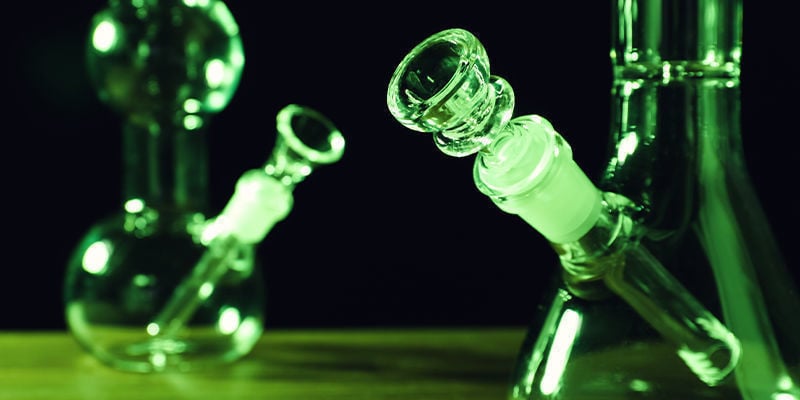
Bubblers and bongs are similar, but distinct. Bubblers are like pipes that contain water. Unlike bongs, which have removable downstems, bubblers are a single, fixed piece that you can't dismantle. They tend to be smaller and more compact than bongs, which offers advantages and disadvantages, as you can imagine.
Anatomy of a bong
If you want to use a bong, it’s important to understand all of the different parts that make it up. This isn’t just so that you can make yourself sound informed, but it actually really helps when you come to use these pieces of kit. Using a bong for the first time can seem daunting, as there are few steps to it, and at first it’s hard to get those right. But very soon, you’ll understand it all and you'll forget that you ever had to learn it in the first place.
Base
The base is a pretty simple one. It is the flat part that sits on the table, the floor, or wherever you choose to place your bong. It doesn’t get much love, but it should: it keeps the whole thing standing (crucial!) and stops the really-quite-disgusting bong water from spilling all over the floor (or other surfaces). You’ll probably hardly ever notice the base if you don't actively appreciate it, but as you can imagine, you’d miss it if it wasn’t there!
Water Chamber
The water chamber is one of the most essential parts of a bong’s anatomy. As the name suggests, it’s where the water lives. These chambers can range from very small in tiny bongs, to quite large in bigger ones—the proportion is key.
In more simple bongs, they won't contain anything but a downstem. But more complex bongs might be filled with a labyrinth or twisting, turning pieces. One thing to note when you use a bong: don’t fill the water chamber to its fullest level. It differs slightly from bong to bong, but usually, they work best when they're more or less half full.
Downstem
The downstem connects the bowl (more on this below) with the water chamber. Half of it emerges out of the bong, and half descends into its murky depths. The smoke will travel down the downstem and come out into the water, where it will then continues its journey.
Downstems are simple, but should be cleaned and generally looked after, or else you'll end up with dirtier, harsher smoke. In other words: a clean downstem will make for a pleasant experience—a dirty one will be rather disgusting.
Bowl
The bowl sits at the top of the downstem like a little bird's nest. Into this nest, you will pack your cannabis. Depending on the bong, the bowl will be a little different, but it'll always be recognisable as the place to put your weed, looking similar across bongs. With some bongs, the bowl separates easily from the downstem, which is important when smoking (especially if the bong doesn’t have a carb hole). In other bongs, the bowl is screwed onto the downstem, especially bongs with downstems from metal.
Carb Hole
Not all bongs have carb holes, but many do. A carb hole is used to let fresh air in when you want to pull the smoke out of the chamber and into your lungs. When you cover the carb hole, this will draw smoke slowly into the chamber, but not into your lungs. When you release it, the smoke will rush up. That's why carb holes are also known as “rush” holes.
Neck
The neck of a bong is a long cylinder between the water chamber and the mouthpiece. Smoke travels up the neck on the final bit of its journey to your mouth.
Mouthpiece
The mouthpiece is just the opening at the top of the bong’s neck that you'll place your mouth/lips on in the endeavour of smoking. This circular opening allows you to breath through the bong, pulling in air and smoke into your lungs.
Additional Features
The above-mentioned parts are the fundamental bits that you’ll find on almost every bong. However, many bongs come with many more parts, such as the following.
Connectors
Glass bowls connect to glass downstems using so-called “ground joints”, which are slightly rough glass joints that seal when they are slotted together. They come in different sizes, such as 14mm, 18mm, etc. Matching connectors properly is important, otherwise, your bowl won’t fit your downstem and you won't be able to smoke.
Ice Catchers
Basically, ice catchers are like little teeth at the base of the neck, which allow you to fill the neck with ice. Doing that makes your smoke incredibly smooth and cool, and really quite pleasant and delicious. The downside of using ice is that it usually melts very quickly and the water chamber could overflow.
Percolators
Percolators split or diffuse the smoke into many little streams, which increases its total surface area. This increased surface area means it then cools more rapidly when it passes through the water, making the overall experience smoother (aka more pleasant).
Screens
Screens are used to stop burnt weed falling down the downstem and into the water. This improves the quality of the smoke, and the lifespan of the water. A water chamber full of burnt plant matter will become quite gross in very little time.
These little mesh screens should be replaced periodically, as they can build up an unpleasant flavour, too. You'll probably get a feeling for when to change it.
What types of bongs are there?
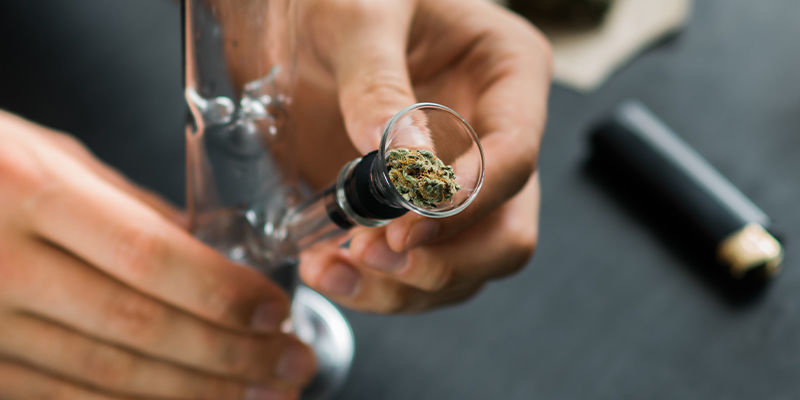
Now, there are several different materials that bongs are typically made from:
- Acrylic: these are cheap, heat resistant and quite easy to clean. Most people’s first bongs are acrylic, and there’s not much to say against them. However, they don’t come with the complex array of filtration systems that other types do.
- Glass: glass bongs are the other most common type, but they are usually more expensive than acrylic ones. They too are easy to clean, look very beautiful and can contain many filters and percolators, making for a high-quality smoking experience (yum!).
- Silicone: these are unbreakable little beasts. Otherwise, they function more or less identically to acrylic bongs.
- Ceramic: ceramic bongs come in a whole array of designs and shapes, but they all function simply, just like acrylic bongs. It goes without saying that they’re pretty fragile, though!
Different bong shapes
Bongs come in many shapes, but here are the more common ones:
- Straight: some bongs are straight cylinders from the base to the mouthpiece.
- Larger water chamber: some bongs have larger water chambers, like bowls or cones, which taper to a straight and narrow neck.
- Something else: you also get bongs with tubes coming out here and there, which look pretty complex and sometimes fancy.
Get to grips with a bong of your own
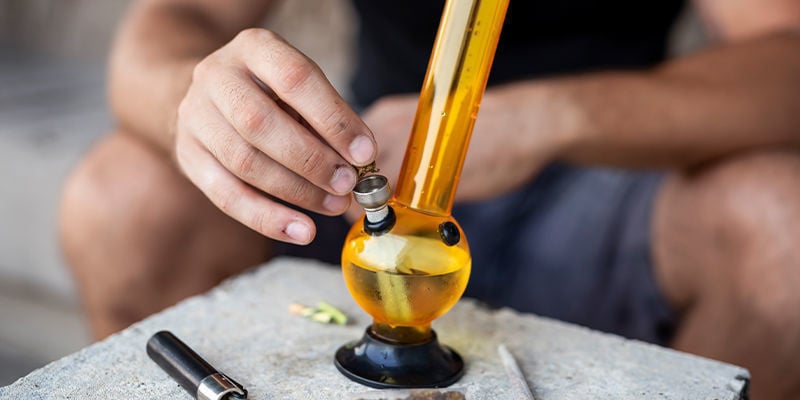
Now you can probably see that understanding the anatomy of a bong is rather essential to using one skilfully. If you feel threatened by all this information, then consider starting off with a simple acrylic bong. They are cheap and require the least knowledge to use them. Take a look at our range of bongs to see which one suits your personal needs and preferences!

- France
- Germany
- International
- Italy
- Netherlands
- Spain
- United Kingdom
- United States
-
£51.78
-
-
-
£51.78
-
£51.78
-
£6.04 £4.83
-
-
-
£82.00 £61.50
-
£198.49
-
-
£51.78
-
£17.26
-
-
£4.31+3 Extra Gift Points
-
£8.63
-
£51.78
-
-
-
£99.26 £79.41
-
£82.00 £61.50
-
-
£82.00 £61.50
-
£82.00 £61.50
-
You might also like
-
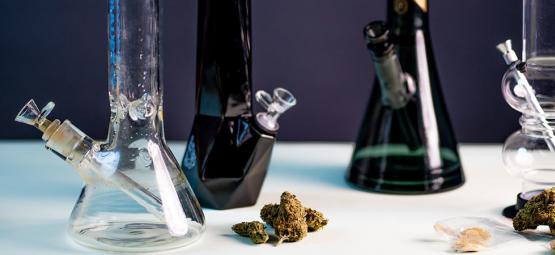
 6 min
5 September 2023
How To Use A Bong
Bongs might look threatening, but they're actually fairly easy to master (if you can get past the coughing). Learn all about how to use a bong here! ...
6 min
5 September 2023
How To Use A Bong
Bongs might look threatening, but they're actually fairly easy to master (if you can get past the coughing). Learn all about how to use a bong here! ...
-
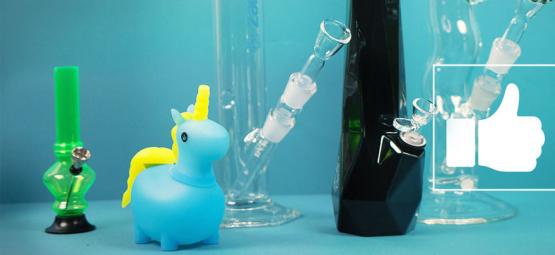
 5 min
2 December 2021
What Are The Benefits Of Using A Bong?
If you're reading this, you're likely one of the many herb-loving individuals who stands steadfast by their bong. Lucky for you, this smoking method has many benefits, ranging from the functional to t ...
5 min
2 December 2021
What Are The Benefits Of Using A Bong?
If you're reading this, you're likely one of the many herb-loving individuals who stands steadfast by their bong. Lucky for you, this smoking method has many benefits, ranging from the functional to t ...
Categories
-
Seed Shop
- Feminized Cannabis Seeds
- Autoflowering Cannabis Seeds
- Regular Cannabis Seeds
- F1 Hybrids
- CBD Seeds
- Zamnesia Seeds
- Top 10 Autoflowering Seeds
- Top 10 Regular Seeds
- Top 10 USA Cannabis Strains
- Top 10 Zamnesia Seeds
- Top 10 Feminized Seeds
- Beginner Strains
- Below 1% THC
- Classic Cannabis Strains
- Cup Winners
- F1 Hybrids
- Fast-Flowering Strains
- High CBD Strains
- High THC Strains
- Mix Packs
- Zamnesia Exclusive Collabs
- Amnesia Seeds
- Blueberry Seeds
- Cheese Seeds
- Diesel Seeds
- Gorilla Seeds
- Haze Seeds
- Kush Seeds
- Purple Seeds
- Skunk Seeds
- White Widow Seeds
- Northern Lights Seeds
- Granddaddy Purple Seeds
- OG Kush Seeds
- Blue Dream Seeds
- Lemon Haze Seeds
- Bruce Banner Seeds
- Gelato Seeds
- Sour Diesel Seeds
- Jack Herer Seeds
- Girl Scout Cookies Seeds (GSC)
- Wedding Cake Seeds
- Zkittlez Seeds
- Pineapple Express Seeds
- Chemdawg Seeds
- Hindu Kush Seeds
- Mimosa Seeds
- Zamnesia Seeds
- ACE Seeds
- Advanced Seeds
- Amsterdam Genetics
- Anesia Seeds
- Auto Seeds
- Barney's Farm
- Big Buddha Seeds
- Bomb Seeds
- BSB Genetics
- BSF Seeds
- Buddha Seeds
- Bulldog Seeds
- Cali Connection
- Cannarado Genetics
- CannaBioGen
- CBD Crew
- CBD Seeds
- Compound Genetics
- The Dank Seeds
- Dark Horse Genetics
- Delicious Seeds
- Devil Harvest Original
- Dinafem
- DNA Genetics
- Doctor's Choice
- Dr. Underground
- Dutch Passion
- Elite Seeds
- Eva Seeds
- Exotic Seed
- Expert Seeds
- FastBuds
- Female Seeds
- Fenocan
- Flash Auto Seeds
- French Touch Seeds
- Garden of Green
- GeneSeeds
- Genehtik Seeds
- G13 Labs
- Grass-O-Matic
- Greenhouse Seeds
- Grow Your Own (DNA)
- Growers Choice
- Homegrown Fantaseeds
- House of the Great Gardener
- Humboldt Seed Company
- Humboldt Seed Organization
- Kalashnikov Seeds
- Kannabia
- The Kush Brothers
- Light Buds
- Little Chief Collabs
- Medical Seeds
- Ministry of Cannabis
- Mr. Nice
- Nirvana Seeds
- Original Sensible
- Paradise Seeds
- Perfect Tree
- Pheno Finder
- Philosopher Seeds
- Positronics Seeds
- Purple City Genetics
- Pyramid Seeds
- Rare Dankness
- Reggae Seeds
- Reserva Privada
- Resin Seeds
- Ripper Seeds
- Royal Queen Seeds
- Sagarmatha Seeds
- Samsara Seeds
- Seedstockers
- Sensation Seeds
- Sensi Seeds
- Serious Seeds
- Silent Seeds
- Solfire Gardens
- Soma Seeds
- Spliff Seeds
- Strain Hunters
- Sumo Seeds
- Super Sativa Seed Club
- Super Strains
- Sweet Seeds
- TICAL
- T.H. Seeds
- Top Tao Seeds
- Vision Seeds
- VIP Seeds
- White Label
- World Of Seeds
- Zativo Seeds
- Seed Banks
-
Headshop
-
Vaporshop
-
Healthshop
-
Smartshop
- Top 10 Smartshop
- Zamnesia Gift Cards
- After Party
- Aphrodisiacs
- Aromatherapy
- Blue Lotus
- CBD Vape Juice
- Capsule Machines
- Crystals, Gemstones & Minerals
- Dream Herbs
- Drug Tests
- Extracts
- Happy Caps
- Herbal Tea
- Herbs & Seeds
- Incense
- Kanna
- Kratom
- LSA Seeds
- Mescaline Cacti
- Microdosing
- Nootropics
- Relaxing
- Salvia divinorum
- Smart Seeds
- Stimulants
- Supplements
- Tinctures
- Vape Herbs
-
Shroomshop
-
Growshop
- Top 10 Growshop
- Top 10 Plant Seeds
- All Seeds
- Cacti
- Chilli & Pepper Seeds
- Companion Plants
- Edible Plant Seeds
- Exotic Seeds
- Flower Seeds
- Fruit Seeds
- Herb Seeds
- Interior Plant Seeds
- Microgreens
- Psychoactive Plant Seeds
- Sprouting
- Vegetable Seeds
- Wellness Plant Seeds
- After Harvest
- Climate Control
- Fertilizer
- Grow Tents
- Harvest, Dry & Cure
- LED Grow Lights
- Plant Seeds
- Propagation
-
Merchandise
-
Sale section
Account
Information
Our Offers
Our website won't work without these cookies activated. Therefore functional cookies can't be disabled.
















